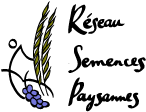Niveau juridique : Union européenne
Question posée le 7-7-2015
There are frequent phytosanitary alerts in Europe concerning the introduction of harmful bacteria or species from non‐EU countries, which can cause major damage to production in the Union. The threat is greater still in the outermost regions (OMRs), which are more vulnerable in this regard.
Furthermore, given their proximity to non‐EU countries, the outermost regions need to take particular care to stop harmful products from entering their territory.
In recent years the EU has tightened regulations to avoid threats of this nature; however, we must remain on high alert and avoid any exceptional cases liable to put animals, plants and humans at risk.
What measures are being taken in the phytosanitary domain to ensure the OMRs are protected from the entry of external hazards?
Is the European Union working to support non‐EU countries, particularly those neighbouring the OMRs, to help bring them into line with European sanitary and phytosanitary standards?
Réponse du 20-10-2015 de Mr Andriukaitis au nom de la Commission
The phytosanitary protection of outermost regions falls under the competence of the respective Member States (France, Spain and Portugal). As regards EU financial support, under the framework of the respective legislation(1) and on the basis of Member States’ requests, the Commission may co-finance programmes concerning phytosanitary measures and surveys in those outermost regions. In 2014, the Commission decided the allocation of EUR 205 500 to France for such measures. No requests for co-financing have been submitted by Spain or Portugal.
The Commission, in cooperation with Member States, follows the phytosanitary risks presented by third countries and, where necessary, takes the appropriate measures to protect the entry of harmful organisms into the Union territory. Different sanitary and phytosanitary-related technical assistance is provided by the EU to developing third countries, including those referred to by the Honourable Member of Parliament. In 2014, the EU’s assistance to these countries through sanitary and phytosanitary programmes amounted to approximately EUR 152 million(2).
(1) Regulation (EU) No 652/2014 of the European Parliament and of the Council of 15.5.2014 laying down provisions for the management of expenditure relating to the food chain, animal health and animal welfare, and relating to plant health and plant reproductive material, OJ L 189/1, 27.6.2014.
(2) Communication from the European Union to the WTO, regarding SPS-related assistance provided by the European Union in 2014, in accordance with Article 9 of the Agreement on the Application of Sanitary and Phytosanitary Measures: docs.wto.org/dol2fe/Pages/FE_Search/DDFDocuments/130963/q/G/SPS/GEN1139A3.pdf
Lien : www.europarl.europa.eu/sides/getAllAnswers.do?reference=E-2015-010897&language=EN
